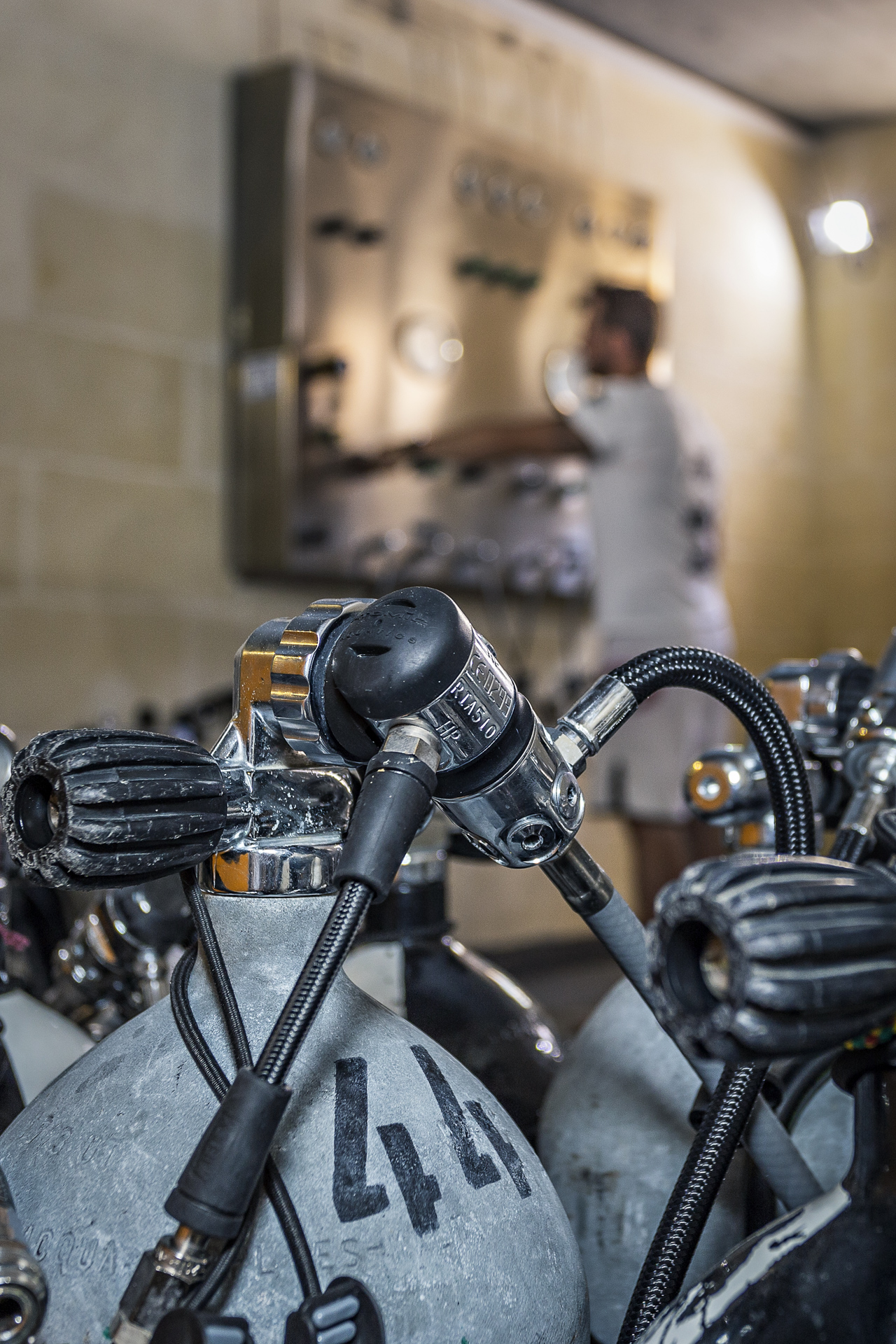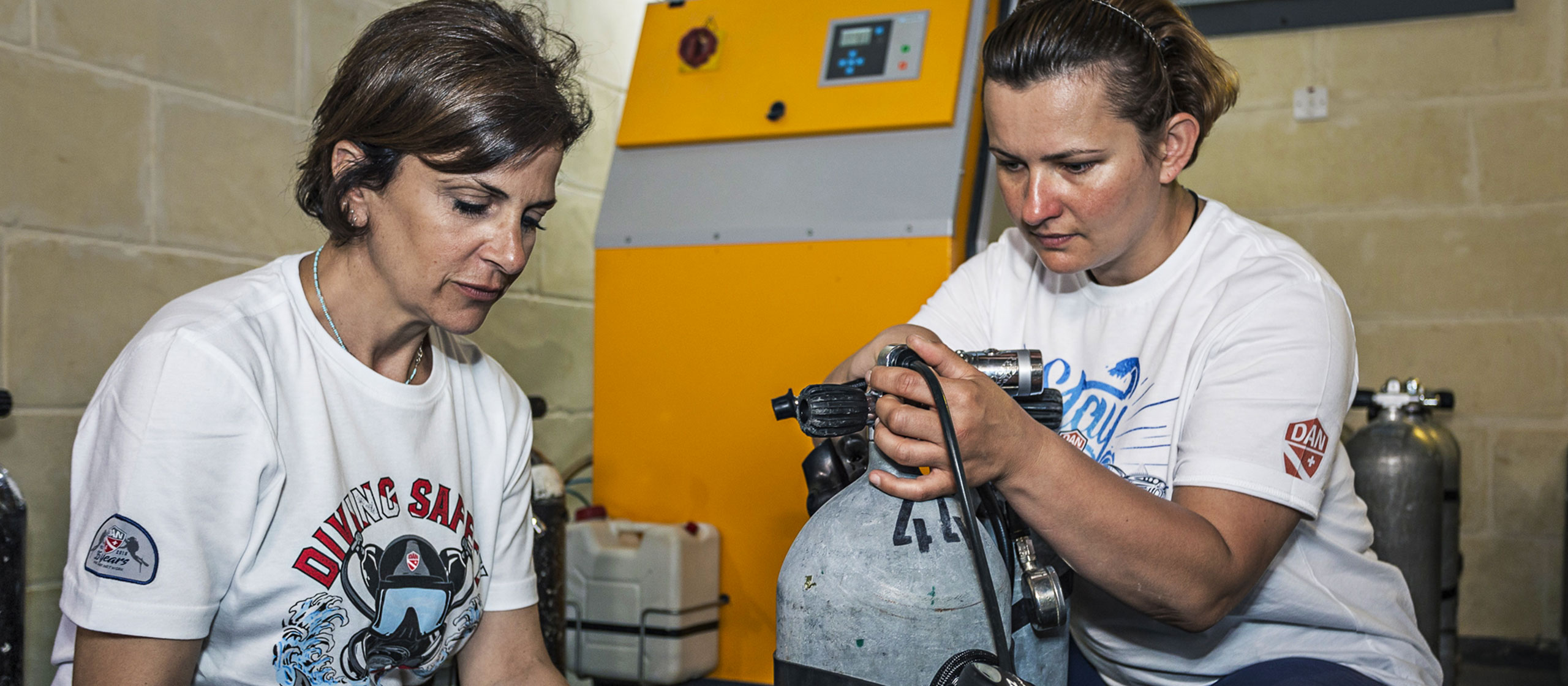Safety
Cylinder valves and accidents in scuba diving
One would expect diving cylinder valve connections to be the same all over the world. However, this is not the case and there are some fundamental differences that have led to confusion, dangerous situations, and even fatal accidents.
Valve outlet connections
Most divers are aware that cylinder valves have either an INT (a.k.a. Yoke or A-Clamp) or a DIN outlet connection to their first stage. Unfortunately, there are different DIN outlet connections depending on the cylinder pressure and gas used, and this needs some explanation.
We commonly refer to DIN Air when we talk about the DIN valves on an air cylinder. However, there are two different configurations, namely the 232 bar connection (generally referred to as a 200 bar connection), and a 300 bar connection. DIN is actually an old term and was referred to as DIN 477 #13 for up to 300 bar, and then #56 for 300 bar and above. Today the correct specification is ISO 12209, but we still call these DIN connections. Both of these DIN fittings have a G5/8 inch internal thread. However, the 200 bar version has a thread with five turns while the 300 bar version uses a thread with 7 turns and is thus slightly longer. A 300 bar first stage will fit on both 200 and 300 bar valves, but a 200 bar first stage will not seal in a 300 bar cylinder valve. This is for safety, to prevent inadvertently overpressurising a 200 bar first stage regulator.

In Europe, you also have the larger diameter M26 valve for cylinders containing a breathable nitrox gas with an oxygen content greater than 22 %. This valve, introduced in European standard EN 144-3, is intended to prevent filling of cylinders with the wrong gas as well as the use of air-only regulators with a cylinder containing a higher concentration oxygen mix, as in both cases this could lead to a fire hazard. This means that if you dive with nitrox, both your cylinder valve and your first stage regulator should have the M26 connection. The problem however is that the M26 valves are rare outside the European Union. In most other countries, normal DIN (or INT) valves are used, which means that you would need an adapter to have your M26 regulator inlet fit onto a standard DIN cylinder valve. This of course is exactly what one wanted to avoid with the EU directive. The M26 valve is also available in 200 and 300 bar configurations.
The INT (Yoke or A-clamp) valve is only used on 200/232 bar cylinders. Most 200 bar DIN valves can be converted into an INT valve, using a DIN to Yoke insert.
Valve inlet threads
The cylinder to valve connection refers to cylinder neck thread. This is where we have the biggest safety concern.
Most commonly used threads are the British Imperial BSP (British Standard Pipe) G3/4-14 and the metric M25x2 thread. These threads are very similar, which unfortunately makes it possible to insert the M25x2 valve into a G3/4 cylinder neck. When this happens, the first turns will feel loose, and about halfway in one will experience some resistance. With a bit of extra force the valve can however be screwed further down into the cylinder neck. This will damage the thread and the connection becomes unstable. While filling the cylinder, the force exerted at the connection will become so high that the valve will be blown off the cylinder. When this happens, the sudden release of pressure will create an enormous shock wave and can do extensive damage. Additionally, the valve will become like a projectile and the cylinder will fly around resulting also in possible damage to the area and persons in the vicinity. If the valve is not blown off during filling, it will just be a matter of time before it will happen: in the car, at home, in the pool, at the dive site… This has led more than once to fatalities and serious, permanent injury.

You can also find other threads, such as M18x1.5, used on cylinders where the neck is not large enough to fit, for example, an M25x2 thread. Here the thread is so different that you will immediately notice the fitting is not correct.
As a general safety tip, only certified and competent persons should fit valves to cylinders and only after checking the threads, making sure they match. Both the valve and the cylinder should also have the type of thread stamped on the valve/cylinder, but this is not always the case or might no longer be visible.
In the US the 3/4” National Pipe Straight Mechanical (NPSM) connection is used. Similar but not equivalent to the BSP 3/4” valve, this valve poses the same safety concern as described in this article.
To add to the confusion, many people think M25 and M26 both refer to the valve outlet connection and do not realise that there are different inlet connections on the market. As written above, making this mistake can lead to severe consequences. However, they can easily be avoided with proper caution.
The following are some of the incidents on the subject reported in the media:
- Diver injury during air cylinder recharging – IMCA (imca-int.com)
- HSE – Mismatching valve threads
- Dive instructor dies after tank explosion (divernet.com)
- Zwaargewonde door ontploffing van duikfles in Brugge – DuikeninBeeld
- Zij kan het nog navertellen… – DuikeninBeeld
- Duikinstructeur komt om in zwembad – DuikeninBeeld
- Kraan schiet van fles – Arbeidsinspectie waarschuwt – DuikeninBeeld
- Het gebeurt nog steeds – gevaarlijke combi van fles en kraan – DuikeninBeeld
- Esplode bombola da sub: morto un cinquantaquattrenne | Sicilia Oggi Notizie
- Dive Instructor Killed In Diving Cylinder Explosion – DIVERS24.COM
- Croatie: une Polonaise se tue en plongée (lefigaro.fr)
- Tauchlehrer nach Explosion im Schwimmbad von Amstelveen gestorben, 16.10. – Forenbeitrag auf Taucher.Net
About the author
Guy Thomas is an expert Diving and First Aid Instructor Trainer and works full-time as Director of Safety Programs at DAN Europe, where he is responsible for the development and implementation of the DAN Europe Safety Initiatives. He also is a member of the Special Rescue Team of the Italian Red Cross and operates as a Helicopter Rescue Swimmer/Diver Medic, onboard a SAR helicopter of the Italian State Police.

